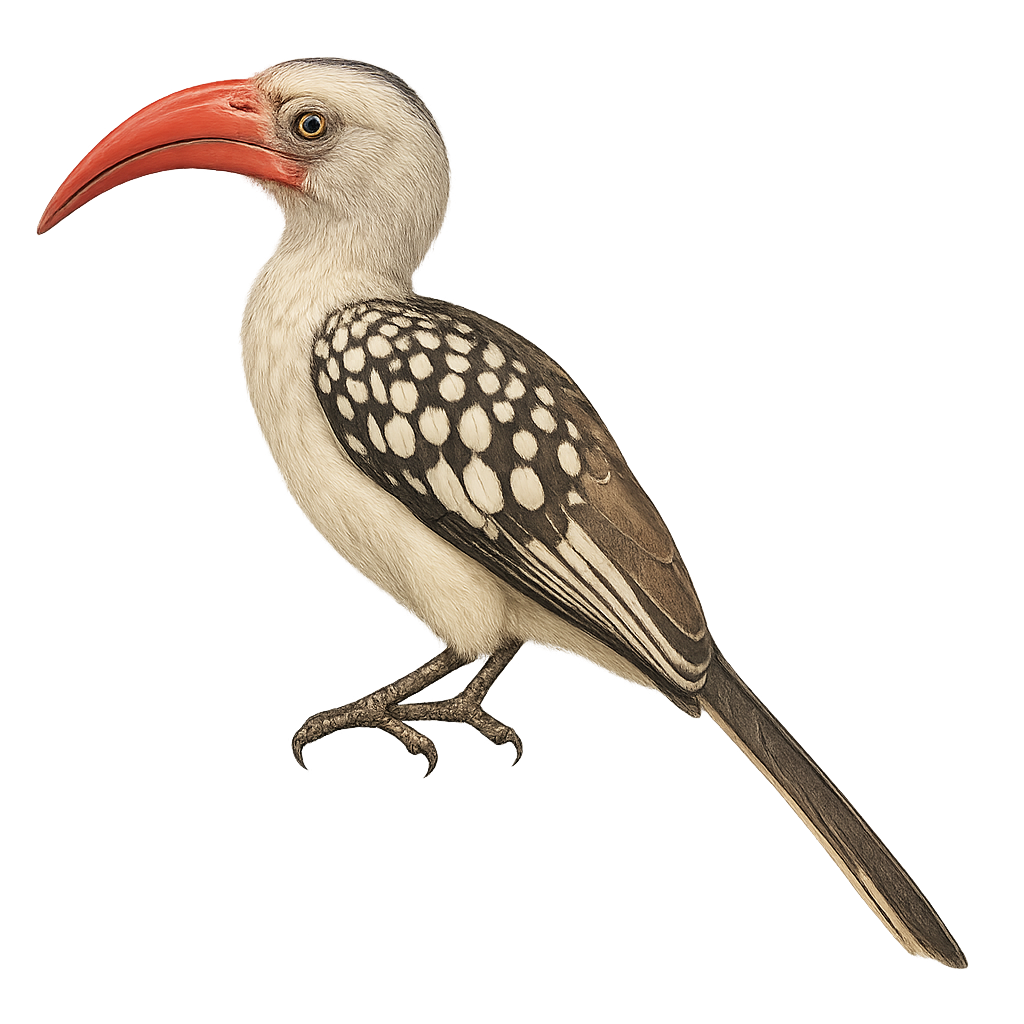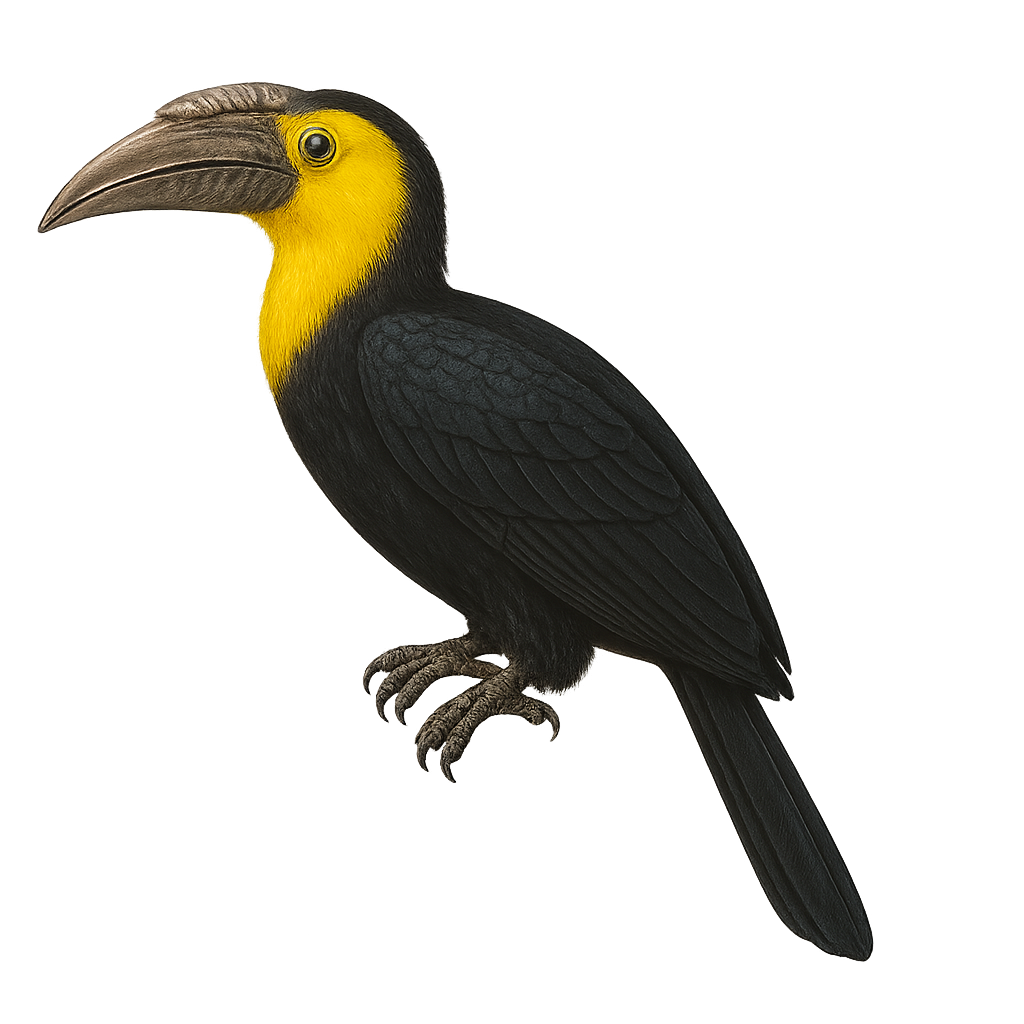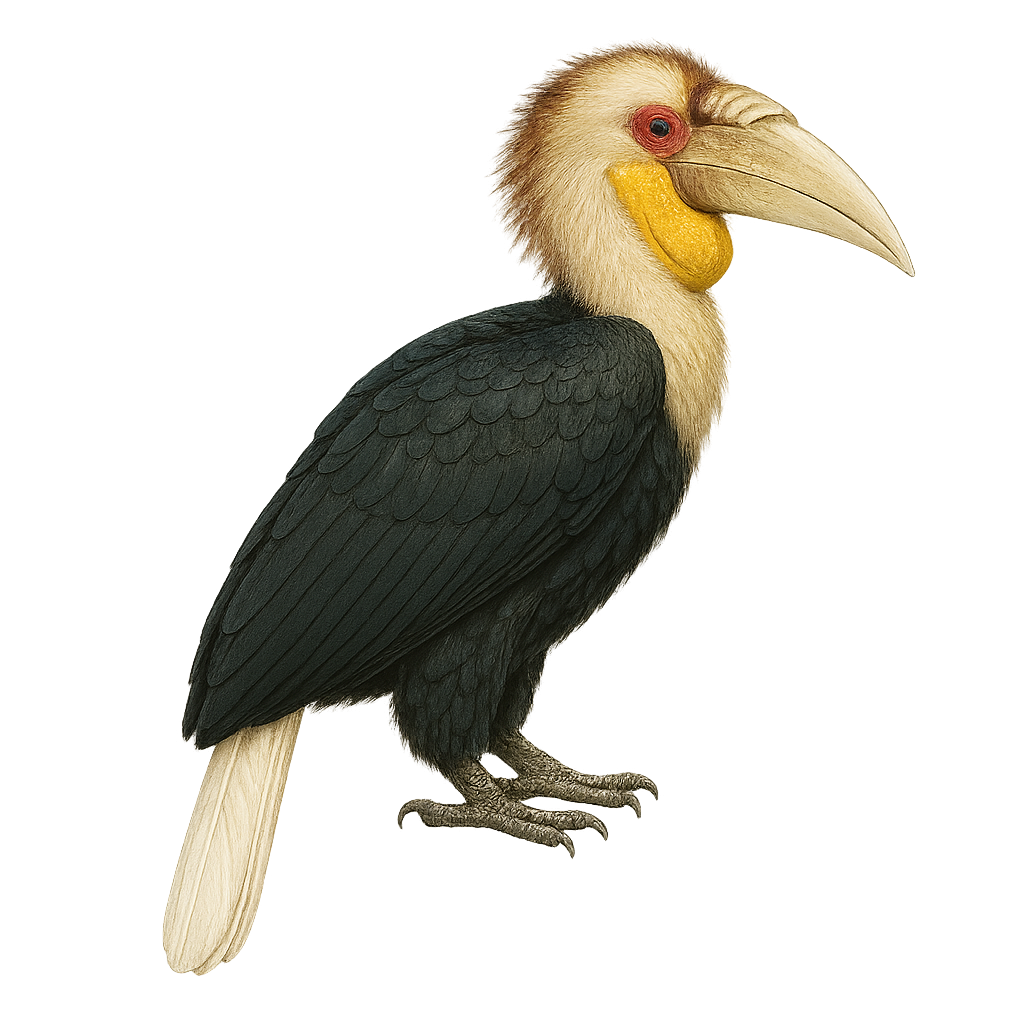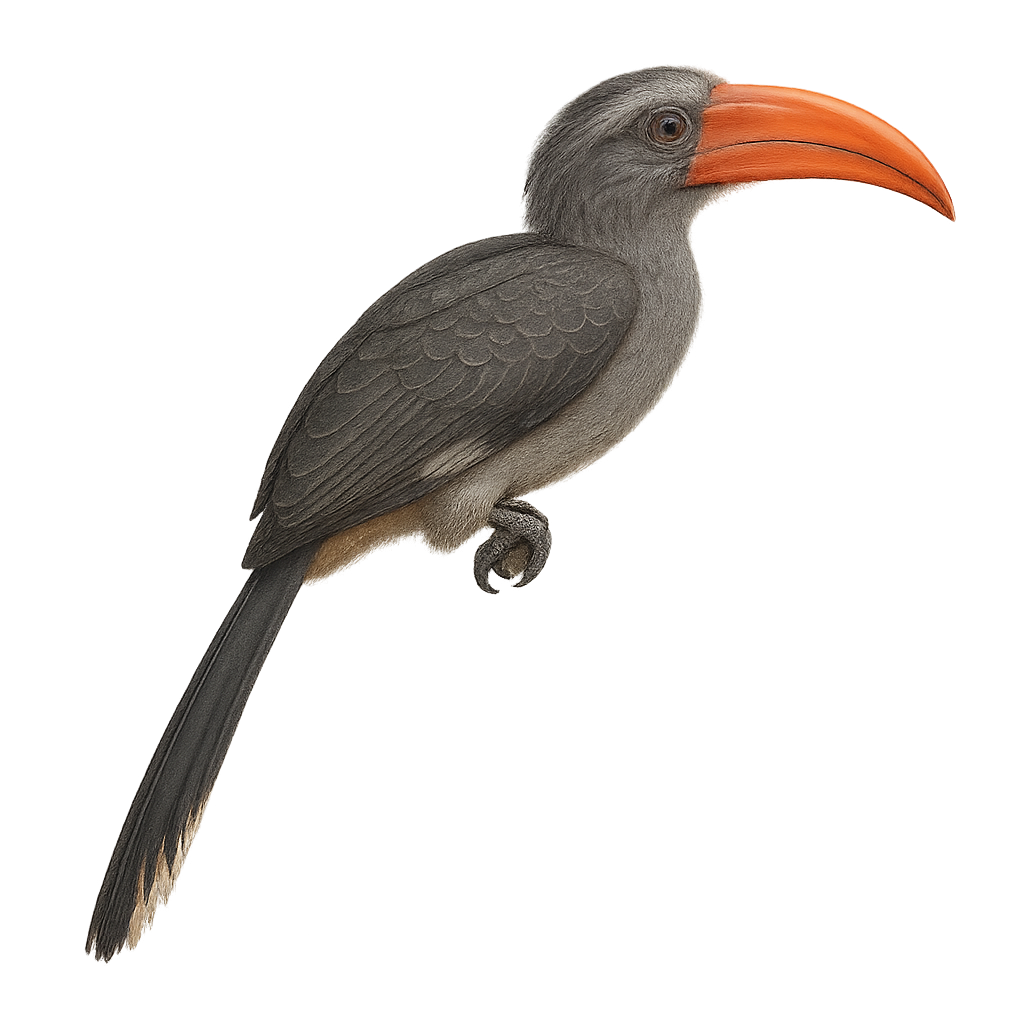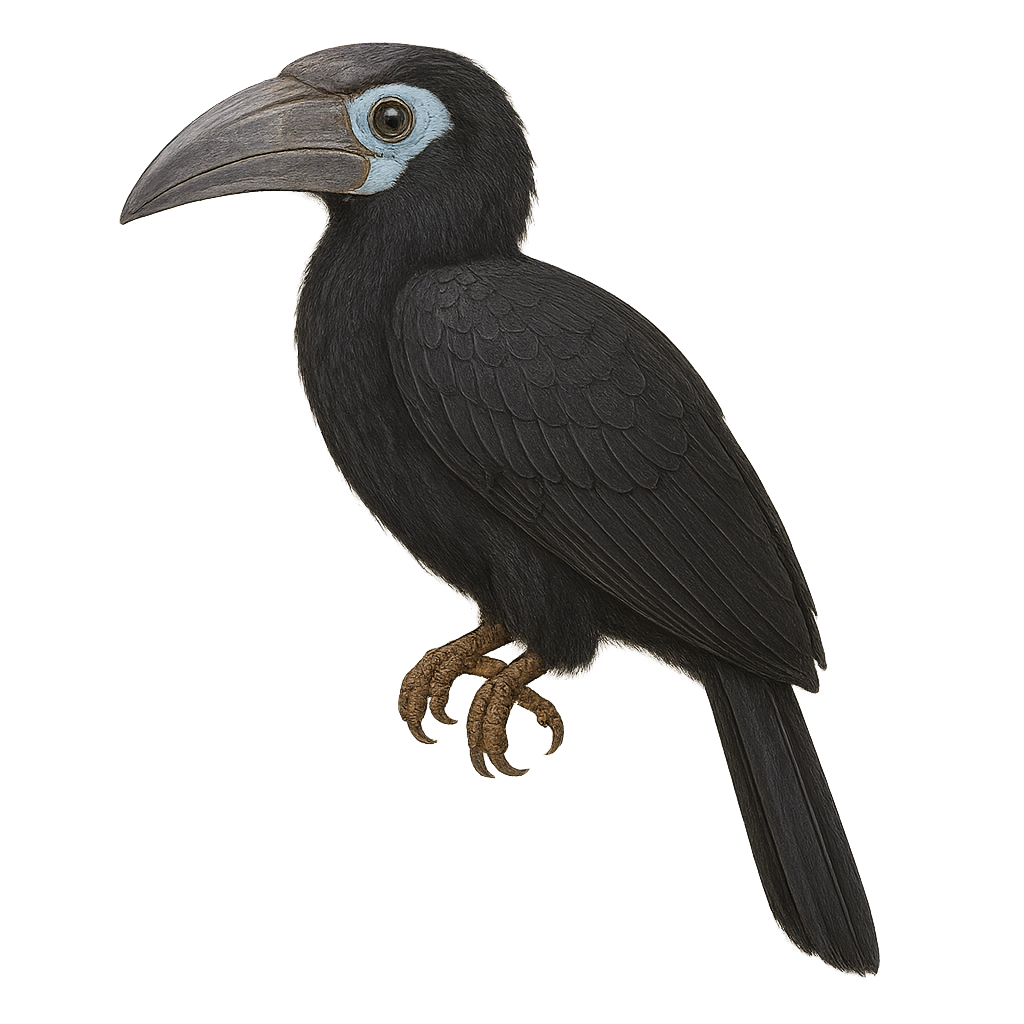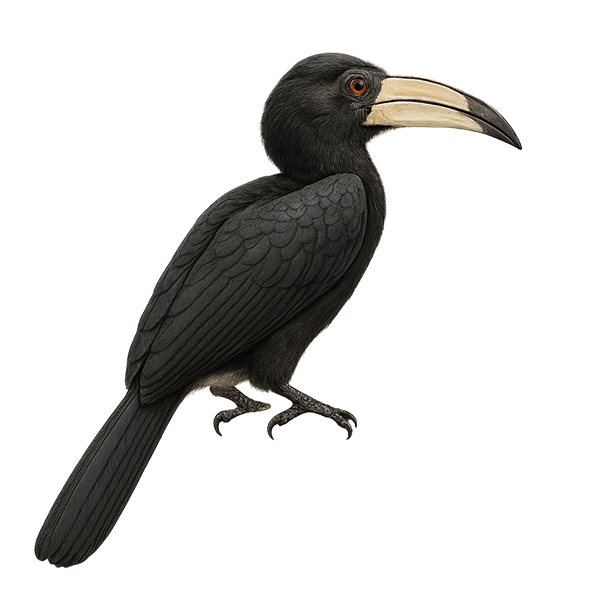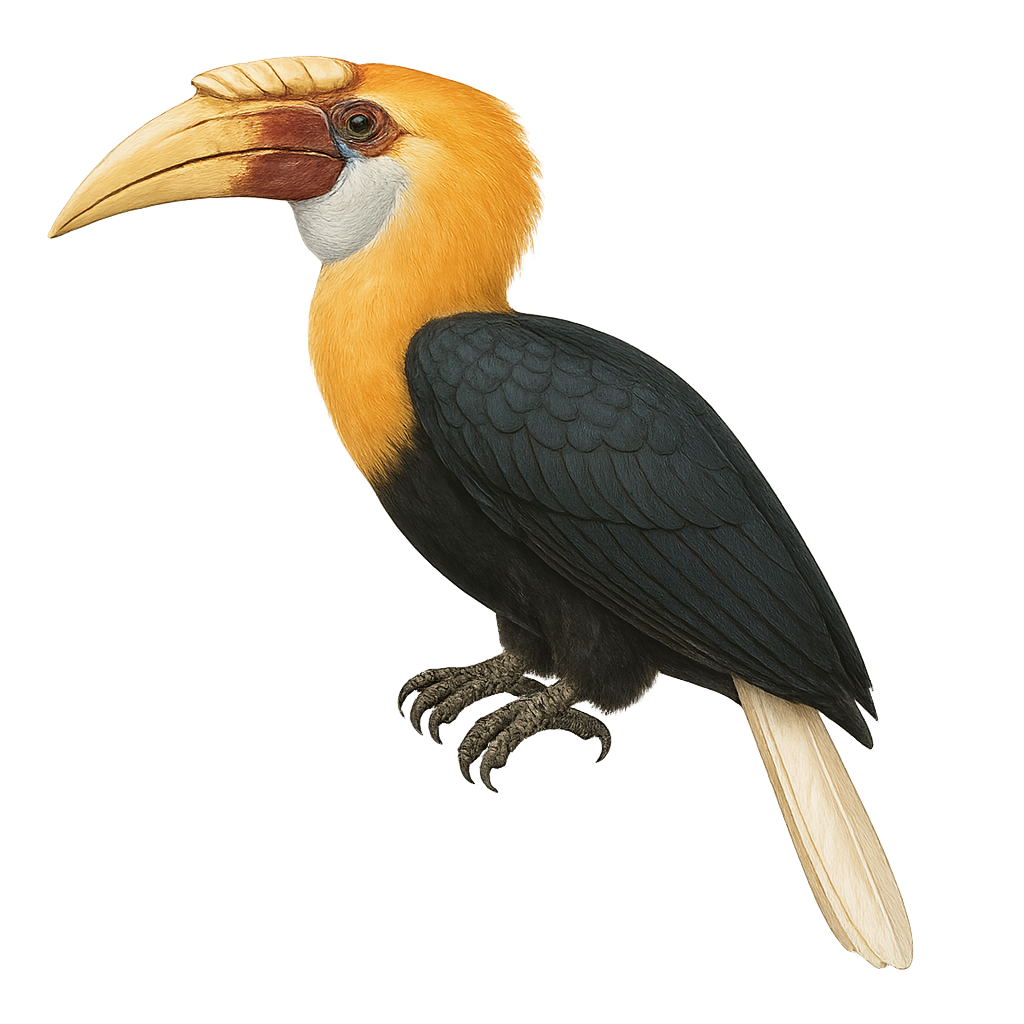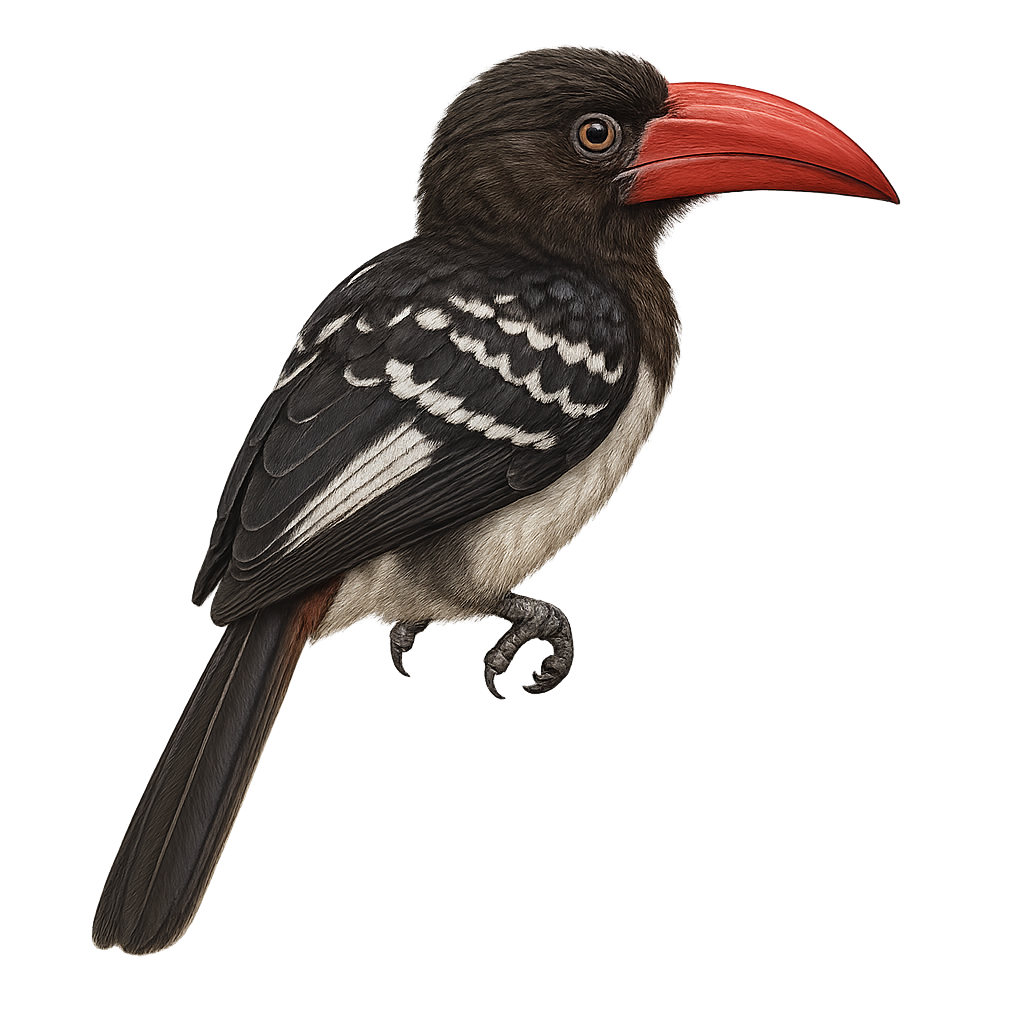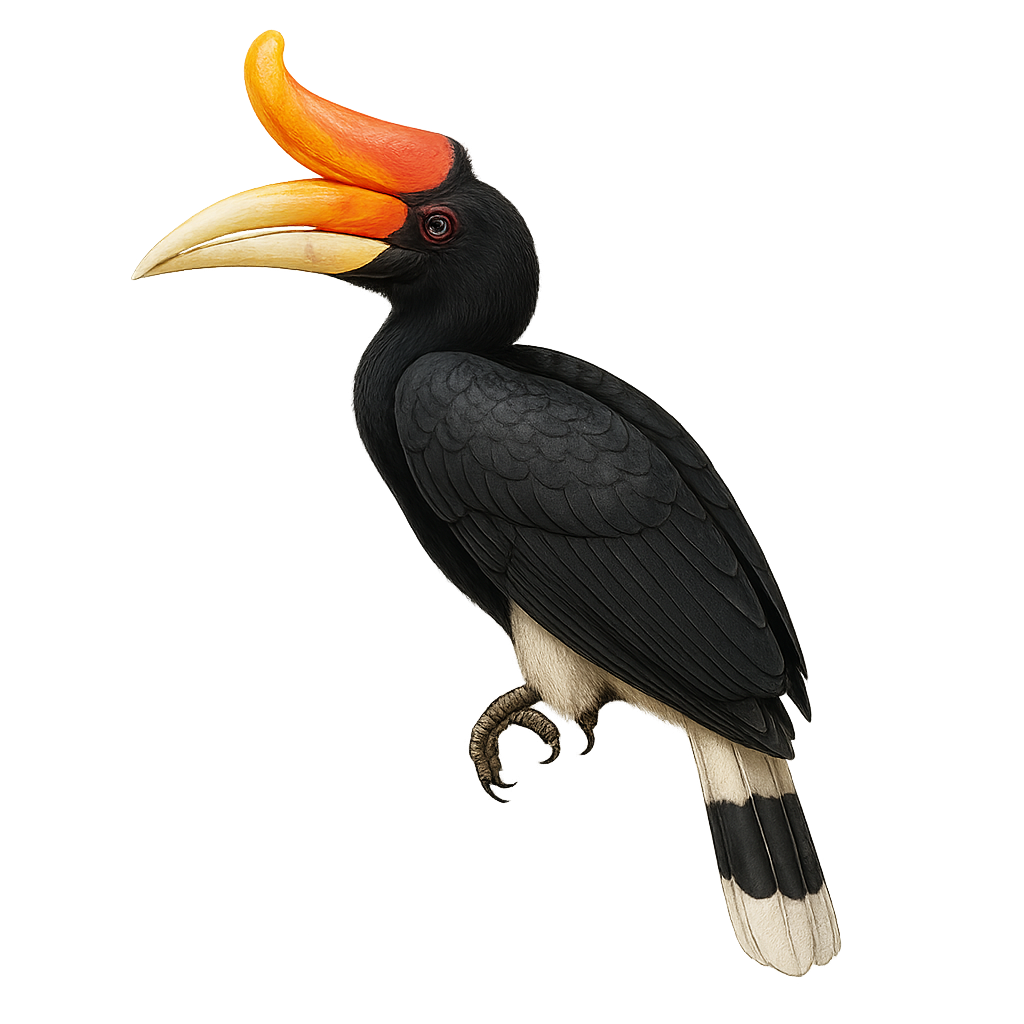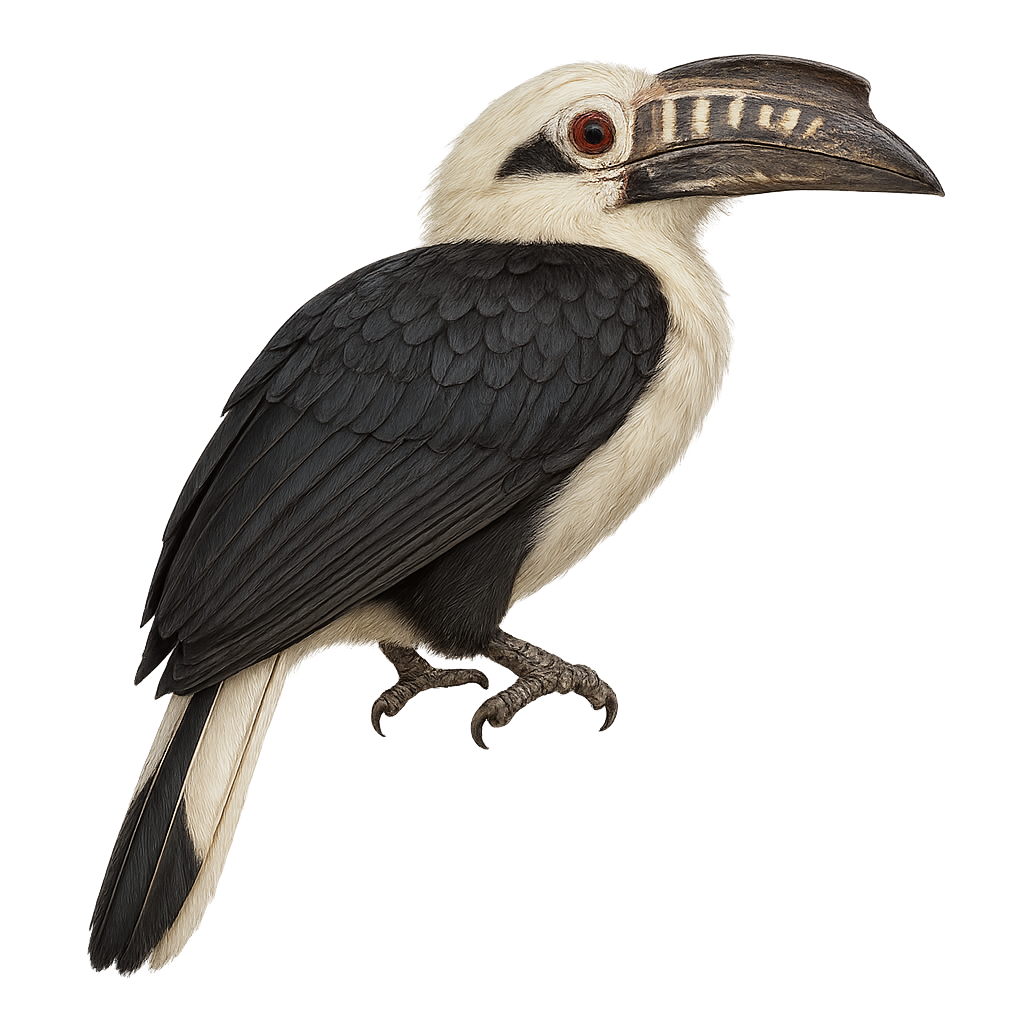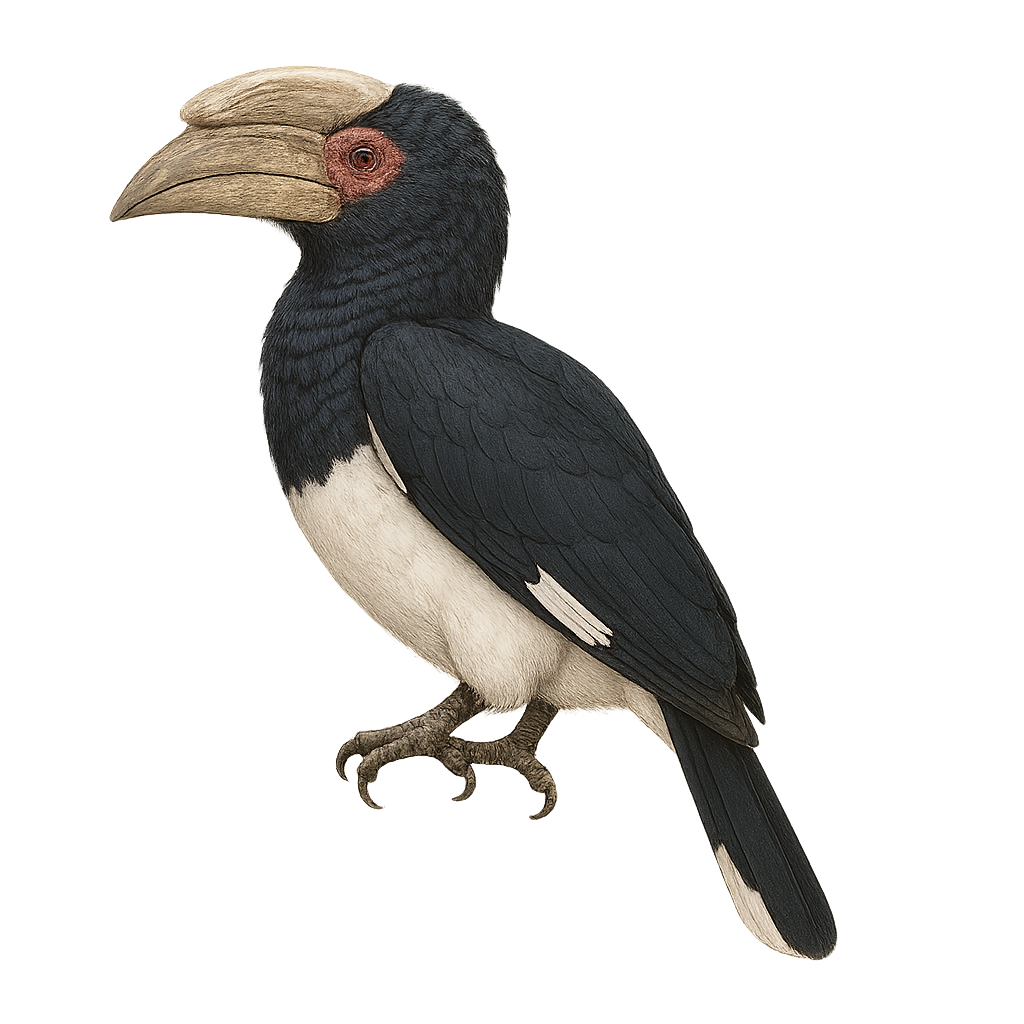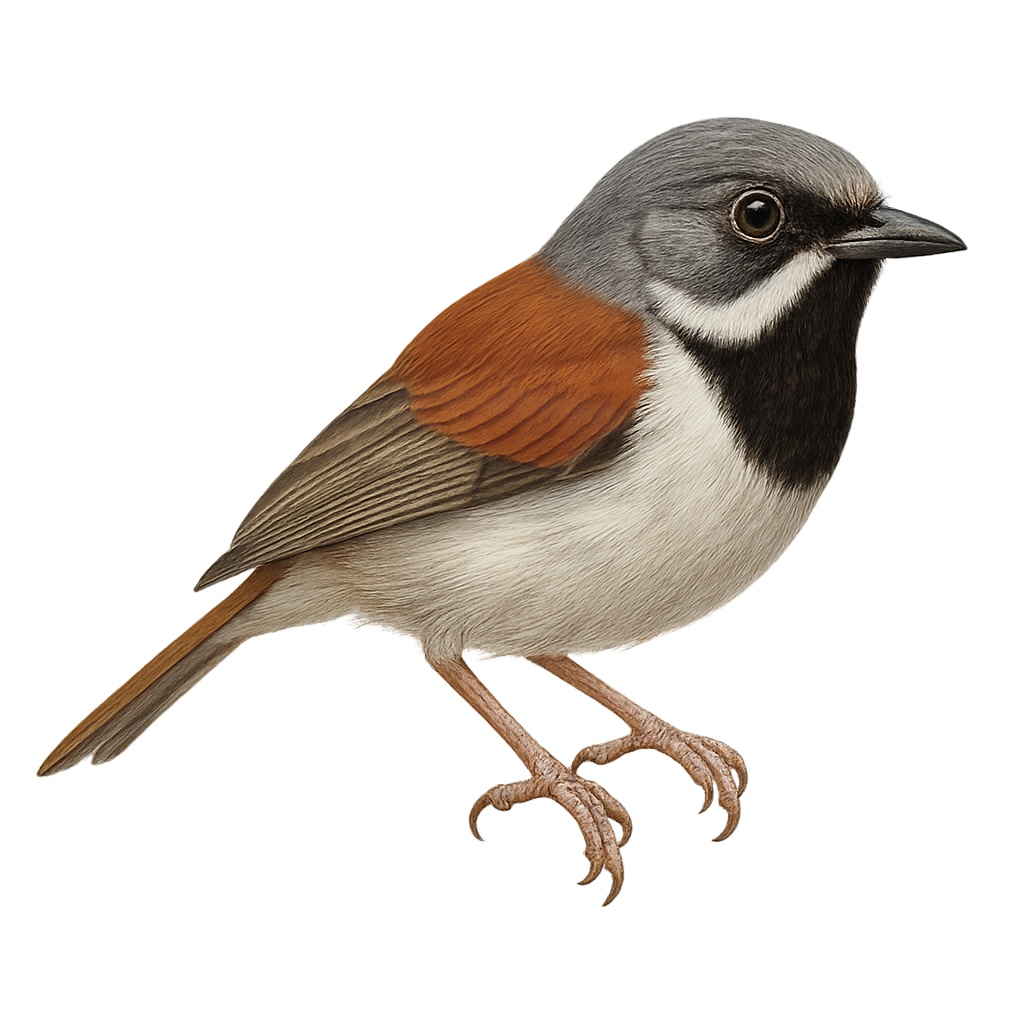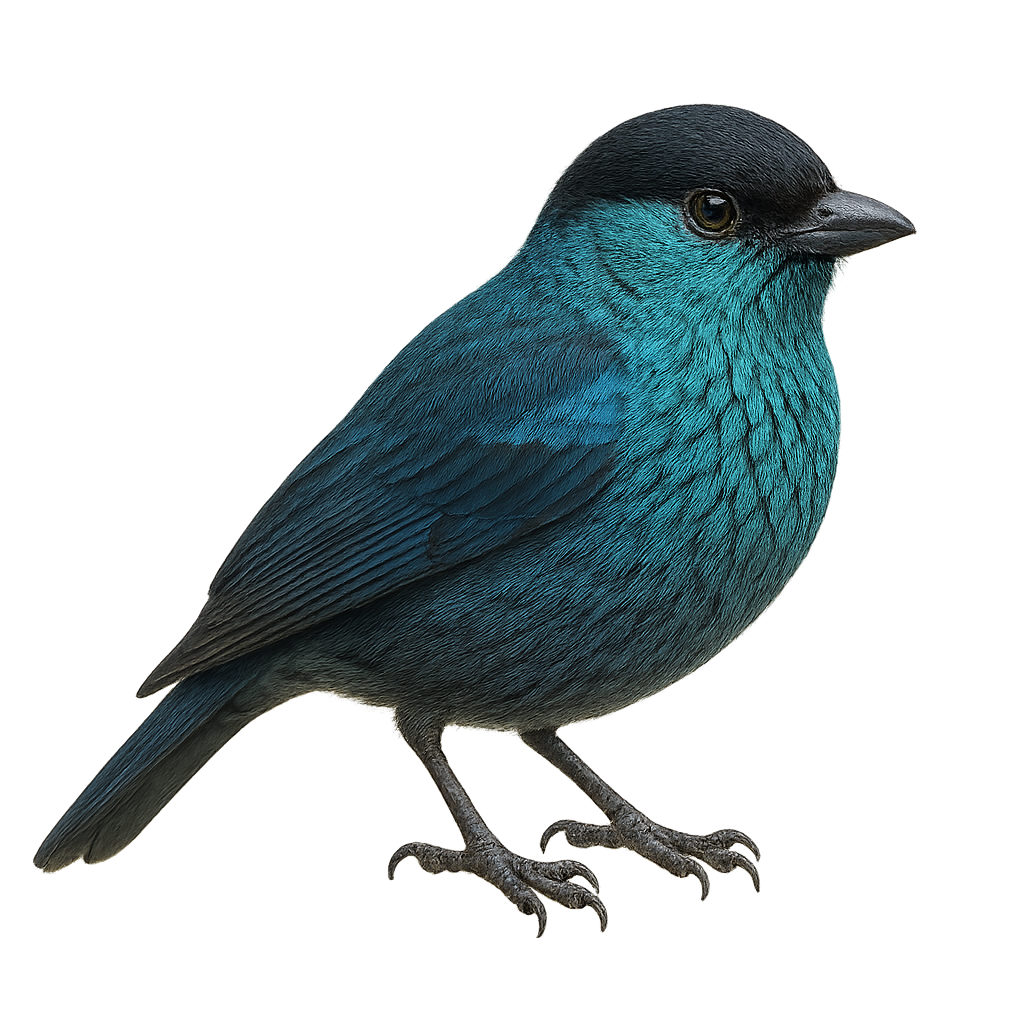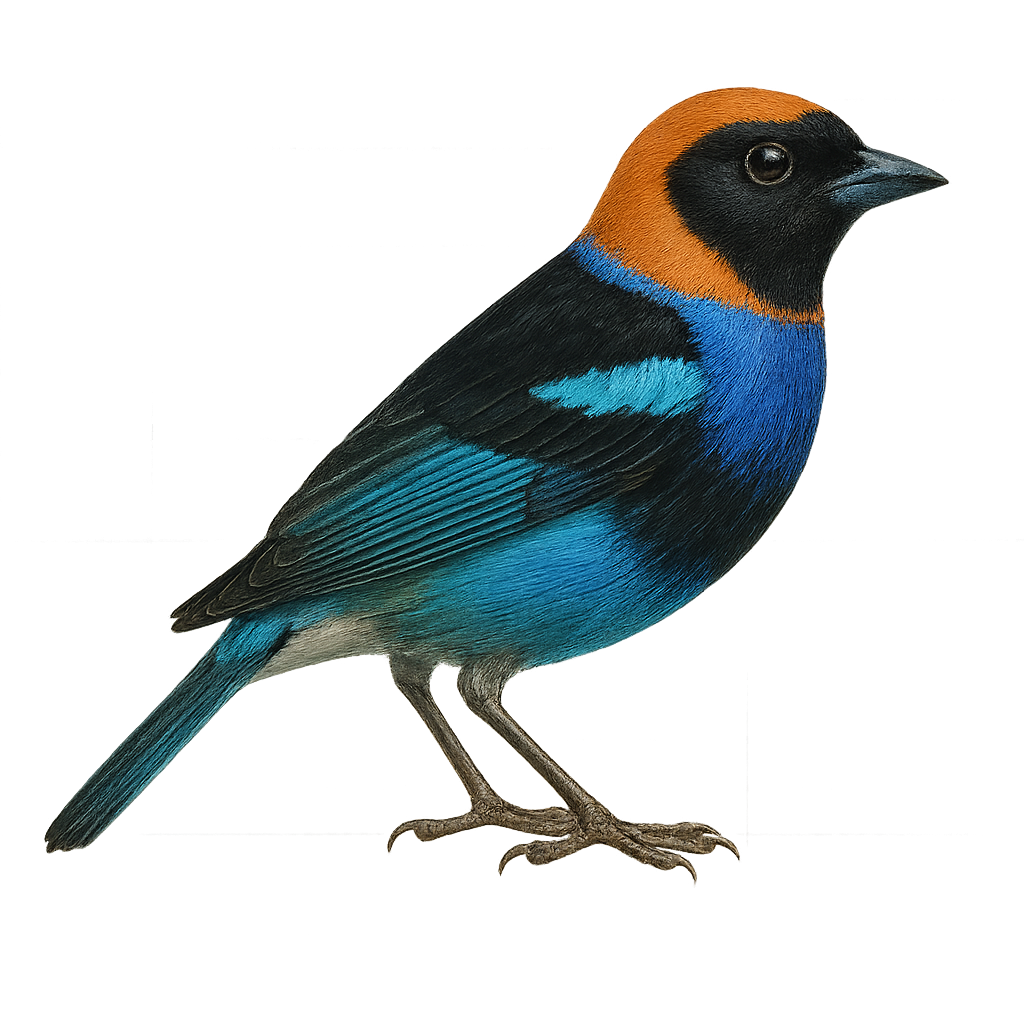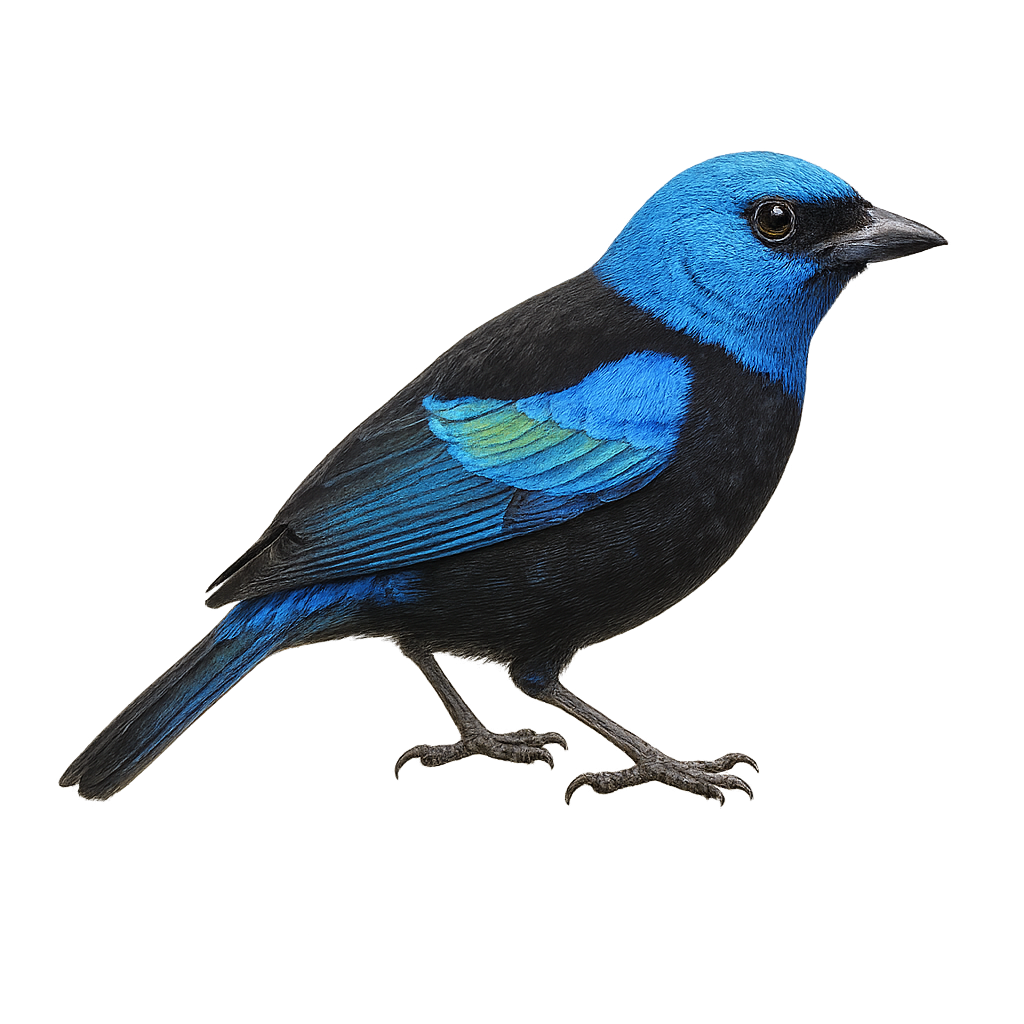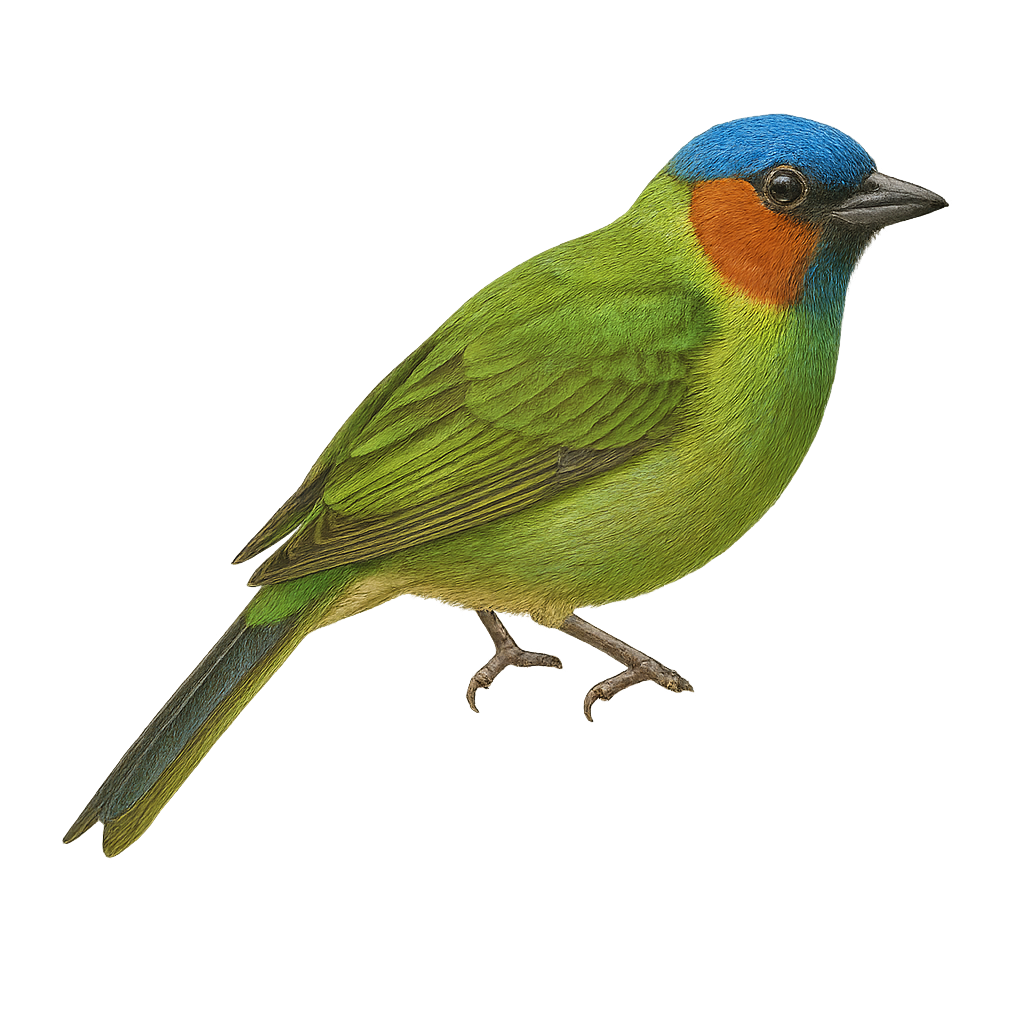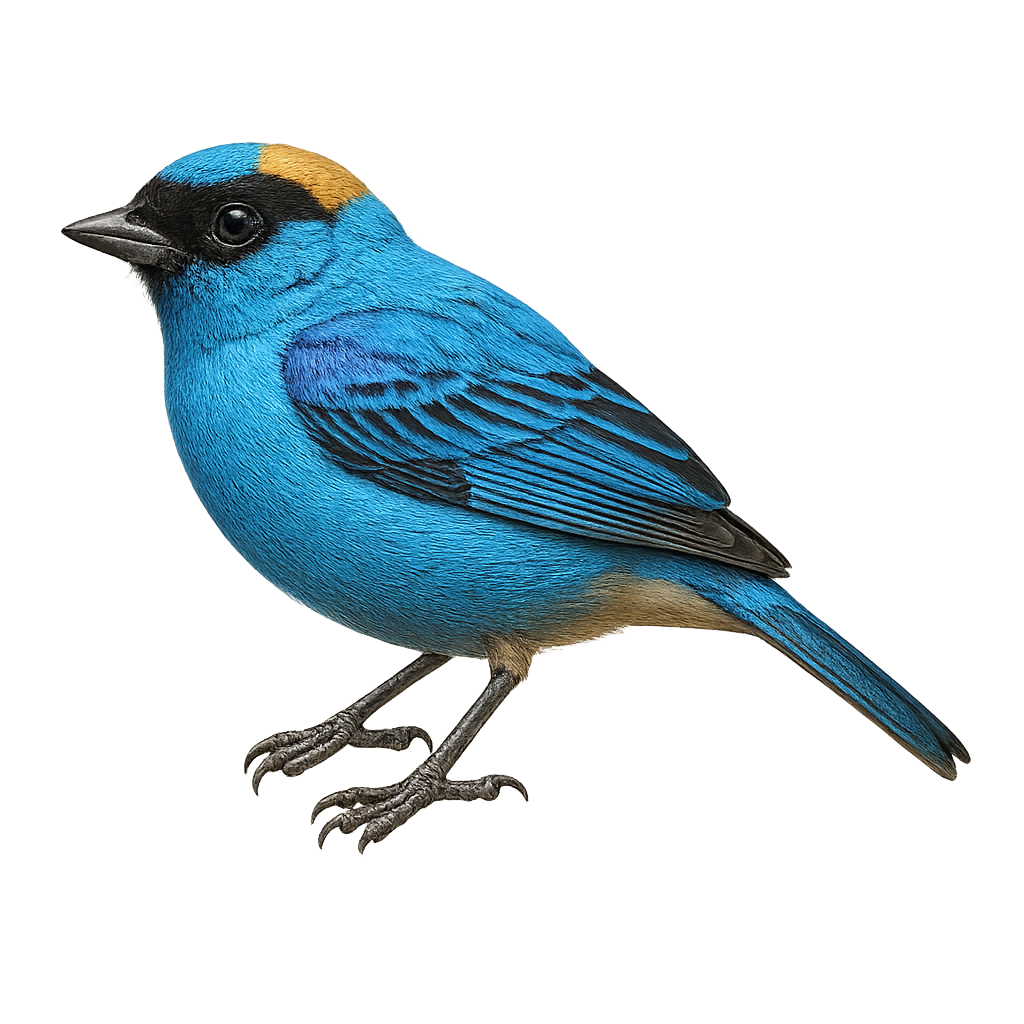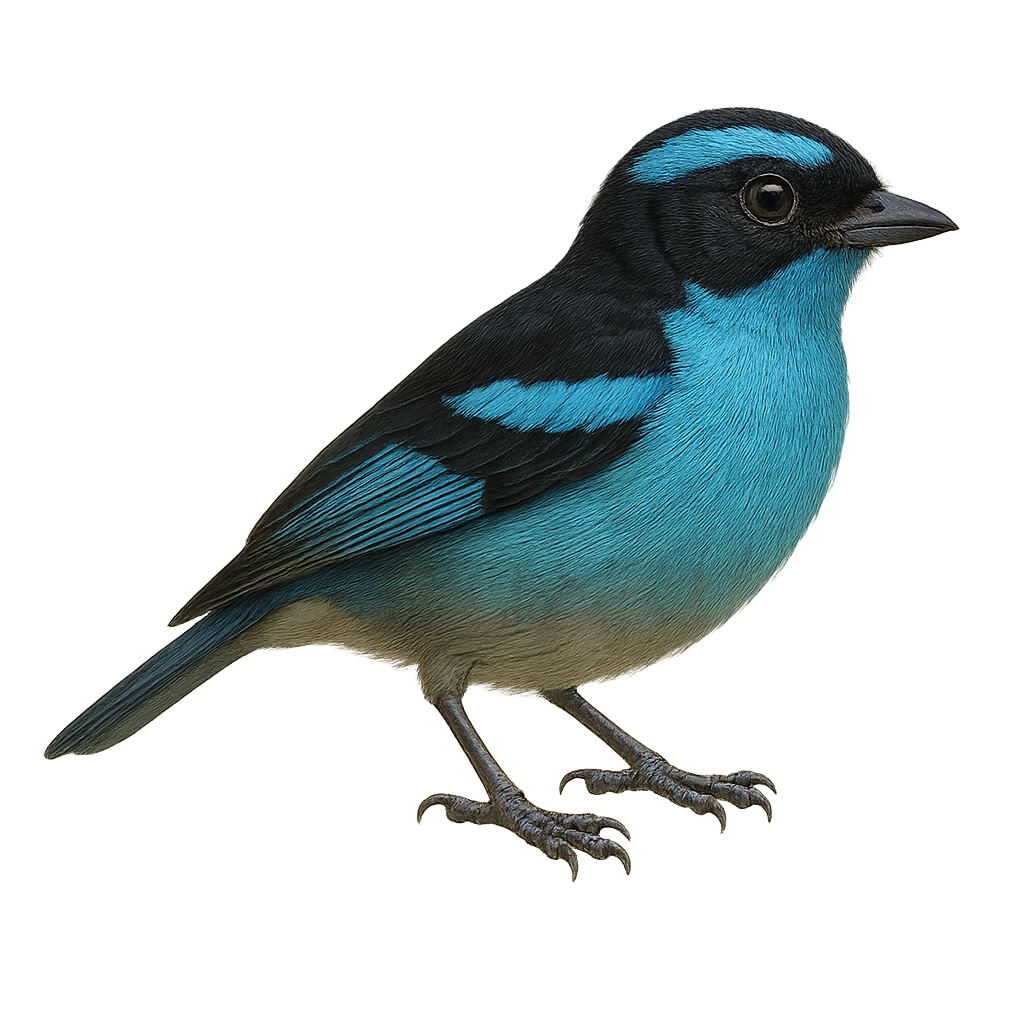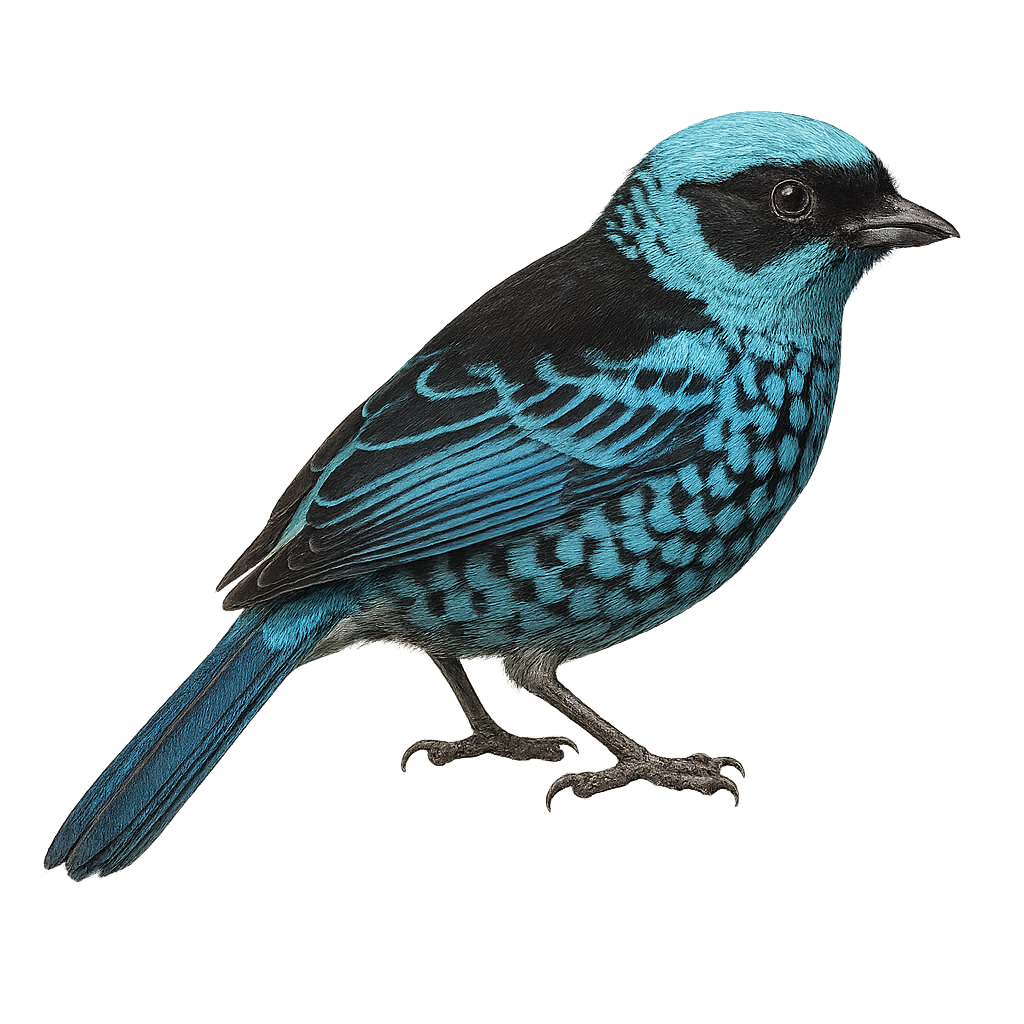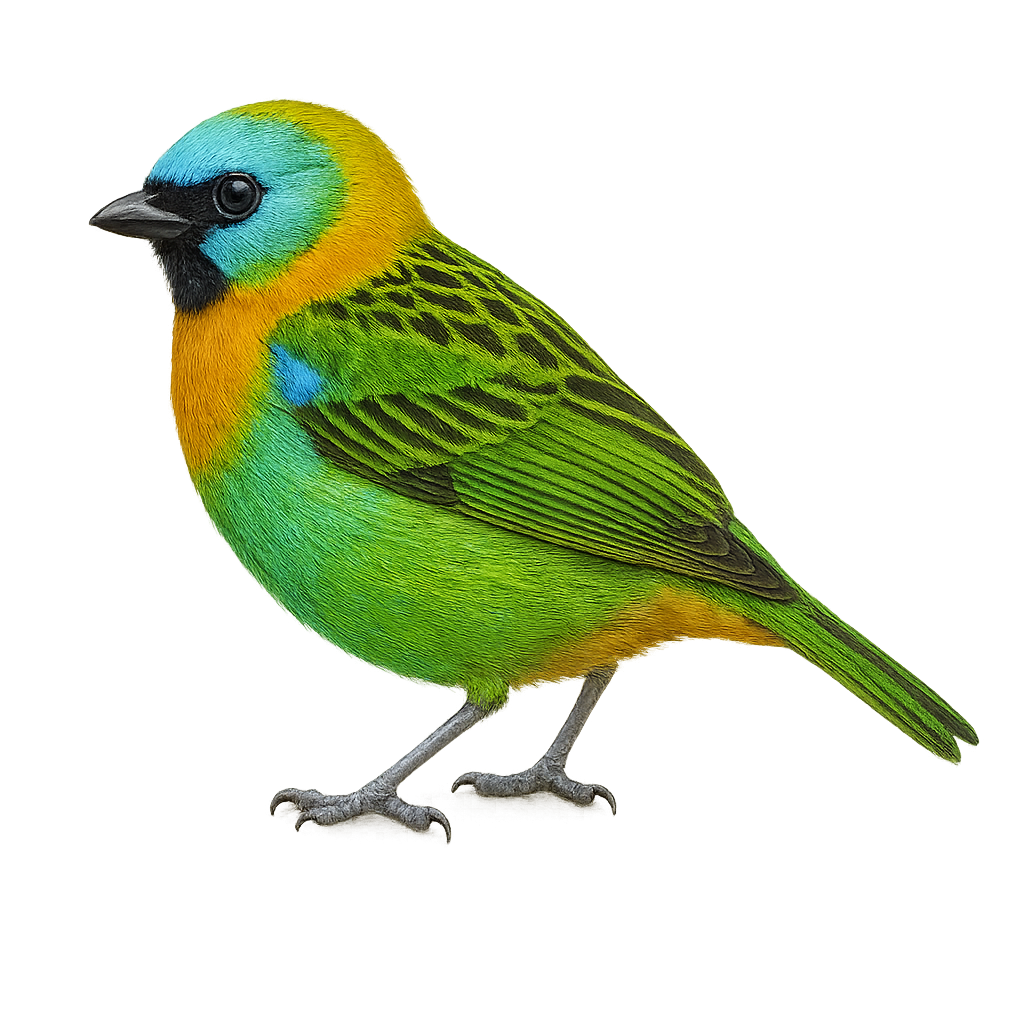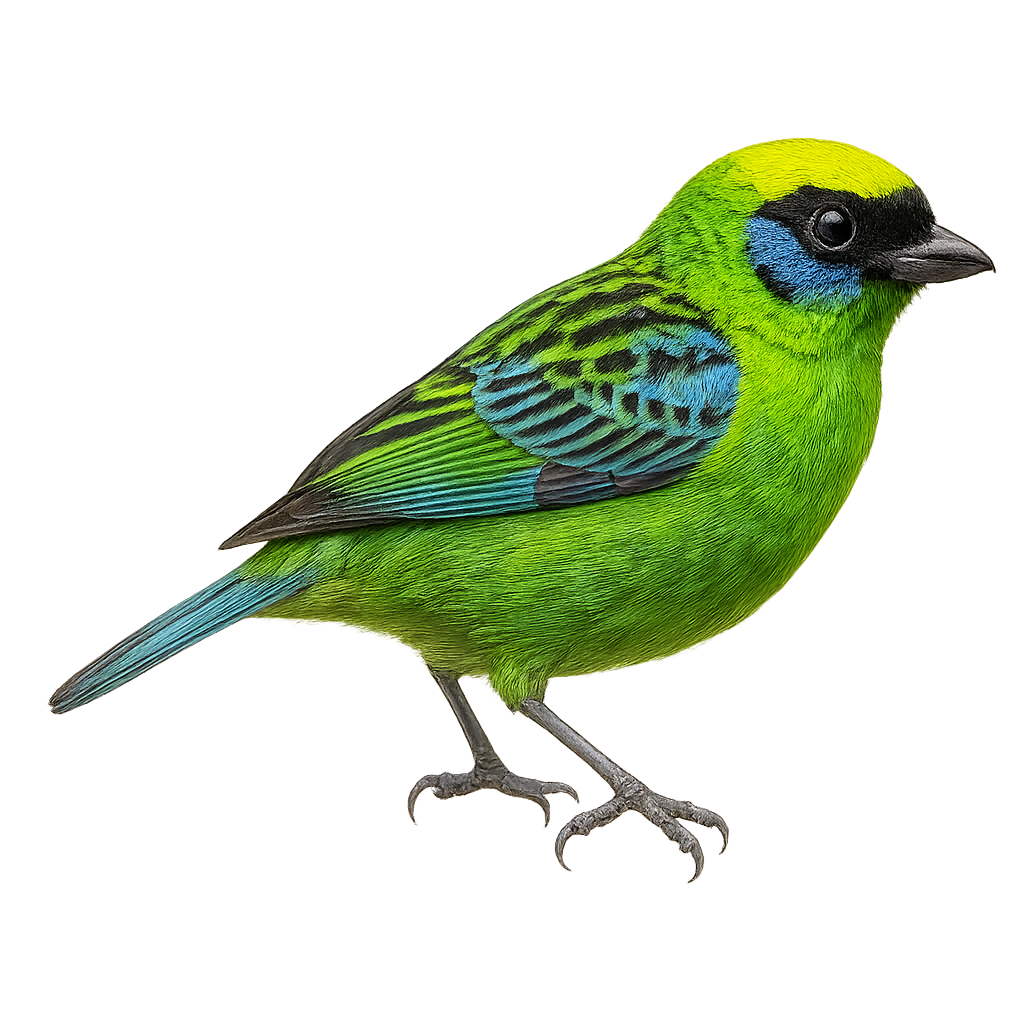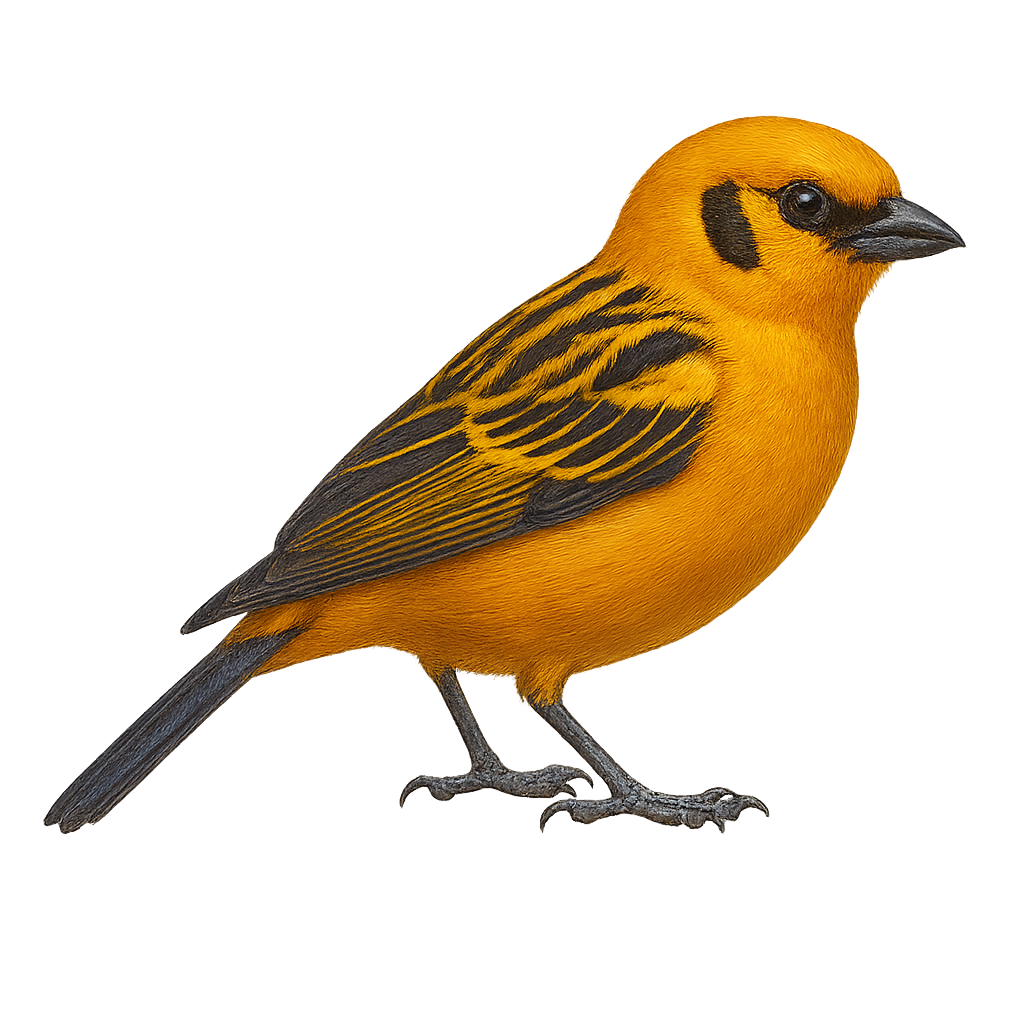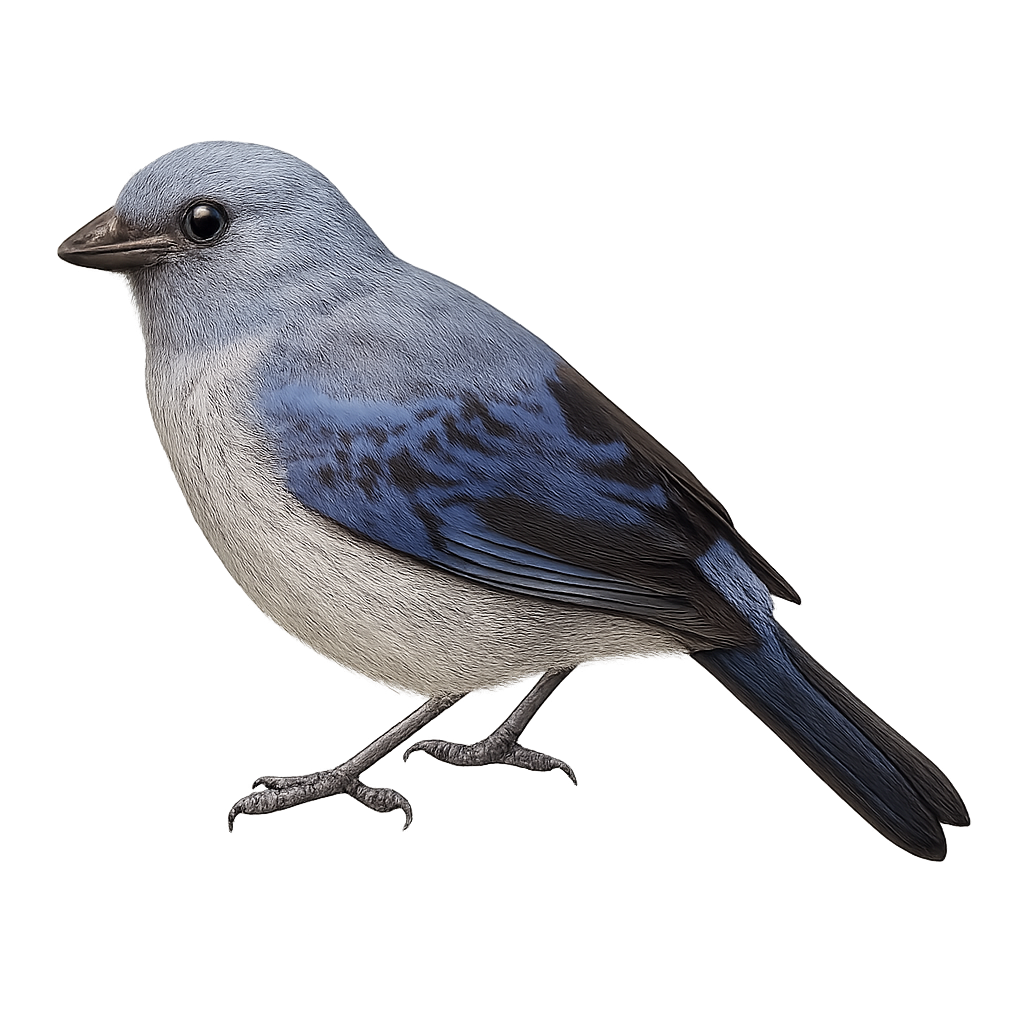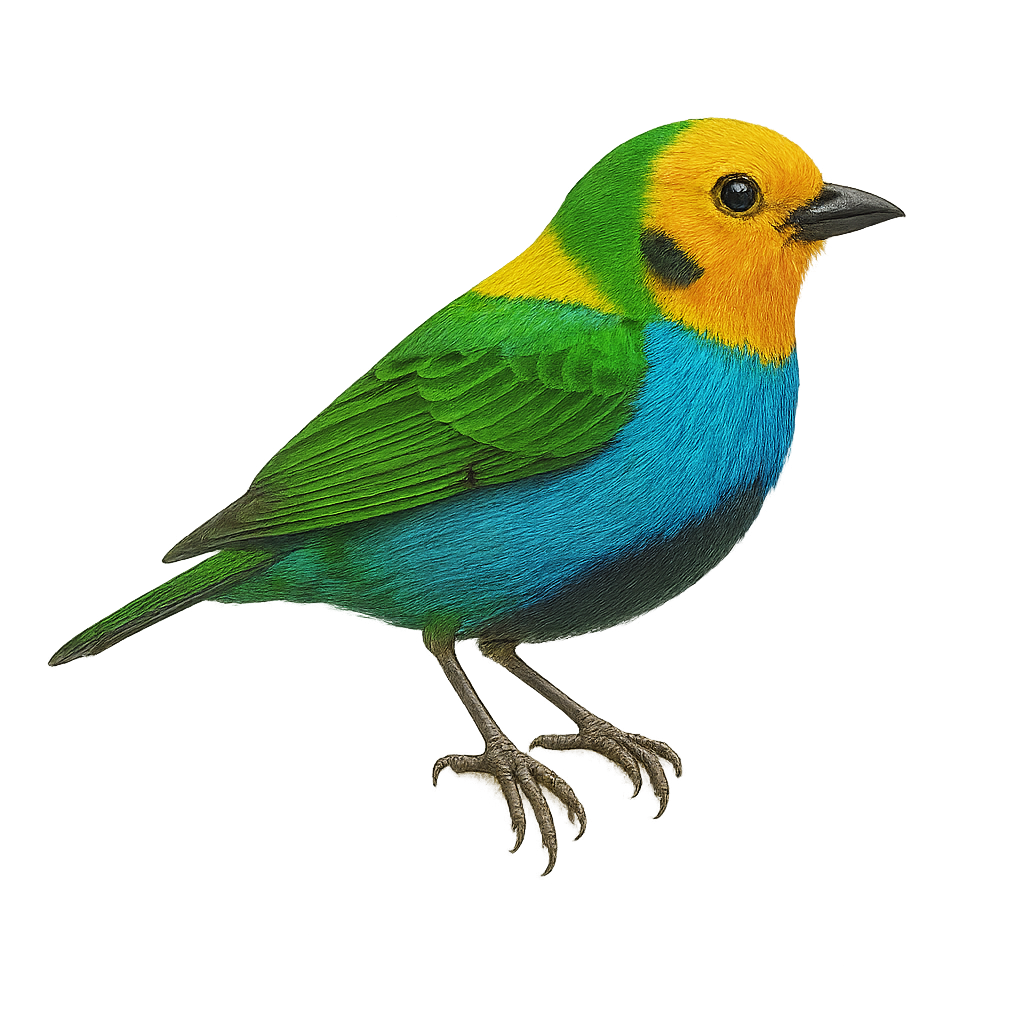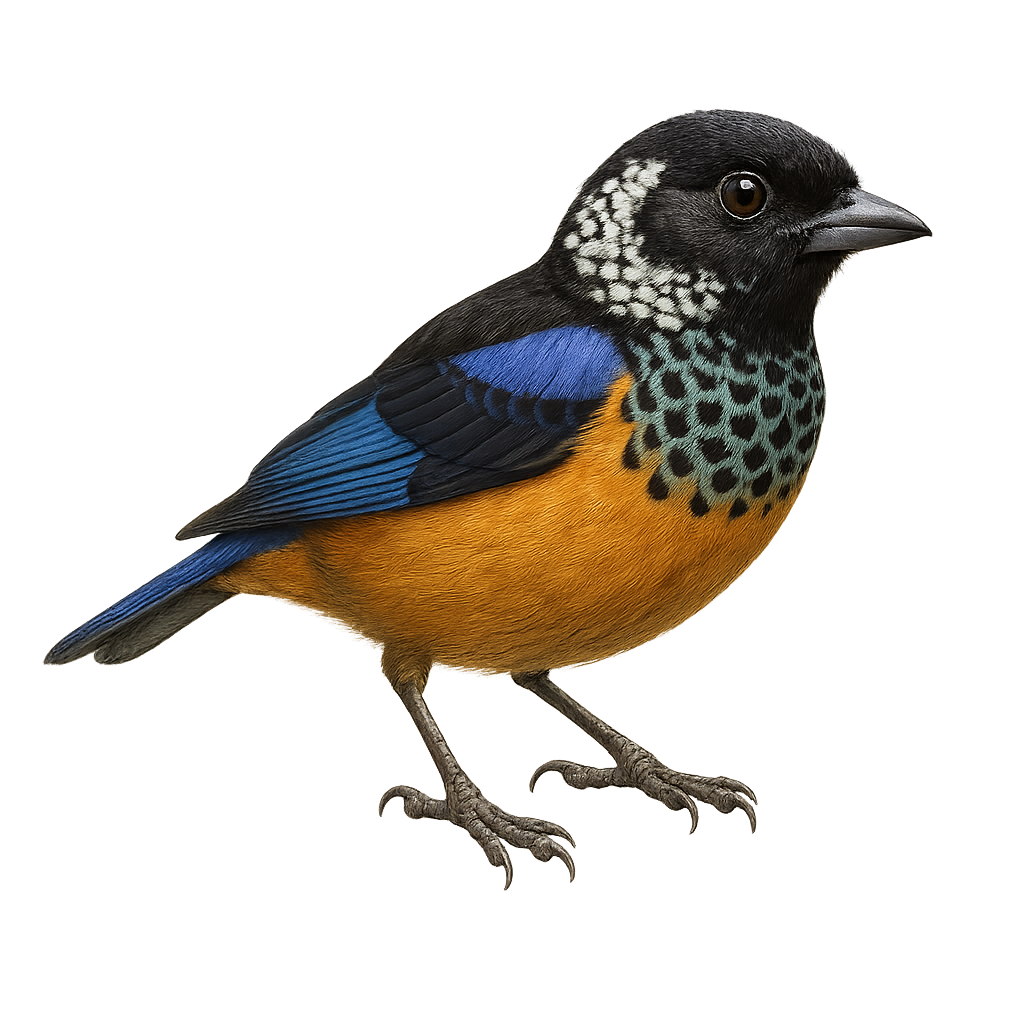The Ruaha Hornbill, Tockus ruahae, is a captivating bird native to the semi-arid regions of East Africa, particularly in Tanzania. This hornbill is notable for its large bill and vibrant coloration, featuring shades of black, white, and red. It is often seen in small groups or pairs, exploring savannas and dry forests in search of food. Its diet is varied, including fruits, insects, and occasionally small vertebrates. The Ruaha Hornbill plays a crucial role in its ecosystem, particularly in seed dispersal from the fruits it consumes. Although its conservation status is not currently concerning, deforestation and habitat loss could pose future threats to its populations.
The Sulawesi Hornbill, or Rhabdotorrhinus exarhatus, is a medium-sized hornbill endemic to Sulawesi Island in Indonesia. It is recognized by its black-and-white plumage, ivory bill with a red casque, and the vivid coloration of its throat: orange in males and pale blue in females. This hornbill inhabits lowland and mid-elevation rainforests and is usually seen in pairs or small groups. It feeds mainly on fruits, but also consumes insects and small animals. The Sulawesi Hornbill is impacted by habitat loss but remains locally common in some protected areas.
The Wreathed Hornbill, Rhyticeros undulatus, is a striking bird known for its large size and distinctive appearance. It features a prominent casque on its large bill, often colorful, which is used to amplify calls. Males and females exhibit marked sexual dimorphism, with males having a bright yellow throat and females a blue one. This bird primarily inhabits the tropical forests of Southeast Asia, playing a crucial role in seed dispersal due to its frugivorous diet. The Wreathed Hornbill is a social bird, often seen in small groups. However, it is threatened by deforestation and hunting, leading to population declines in some areas.
The Malabar Grey Hornbill, or Ocyceros griseus, is a captivating bird native to the lush forests of India. It is characterized by its ash-grey plumage and prominent, slightly curved bill, giving it a majestic appearance. This bird measures about 45 to 58 cm in length and weighs between 200 and 400 grams. Primarily frugivorous, it feeds on various fruits but can also consume insects and small vertebrates. The Malabar Grey Hornbill is often seen in pairs or small family groups, moving agilely through the canopy. Although relatively common in its natural habitat, it is threatened by deforestation and habitat loss.
The Bushy-crested Hornbill, or Anorrhinus galeritus, is a medium-sized hornbill found in the tropical forests of Southeast Asia, including Malaysia, Thailand, Borneo, and Sumatra. It is identified by its dark brown plumage, pale underparts, and ivory bill lacking a prominent casque. Highly social, it forms noisy family groups that move actively through the canopy in search of fruits, insects, and small animals. The Bushy-crested Hornbill inhabits lowland forests and can also be found in degraded areas. Though still locally common, it is threatened by ongoing deforestation.
The Southern Hornbill, also known as the Yellow-billed Hornbill, is a large tropical bird easily recognized by its large beak and distinctive casque. It measures about 55 cm in length and weighs between 130 and 150 g. Its plumage is primarily black and white, with characteristic yellow and orange hues on the beak and casque, giving it a striking appearance. The Southern Hornbill primarily inhabits forests and savannas in Southern Africa, notably in Namibia, South Africa, and Botswana. This bird is omnivorous, feeding on fruits, insects, small reptiles, and occasionally small mammals. It is known for its social behavior, often living in small groups or families. Although the species is not currently endangered, it can be vulnerable to habitat loss due to agriculture and deforestation.
The African Pied Hornbill, or Tockus fasciatus, is a striking bird known for its black and white plumage and distinctive silver cheeks. Found mainly in West Africa, it inhabits tropical forests and wooded savannas. Its diet consists mainly of fruits, insects, and small vertebrates. Known for its social behavior, the hornbill is often seen in small groups or pairs. It nests in tree cavities, where the female is sealed in during incubation. The male provides food until the young are ready to leave the nest. This species plays a crucial role in seed dispersal, contributing to the health of forest ecosystems.
The Blyth's Hornbill, or Rhyticeros plicatus, is a striking bird known for its large size and distinctive plumage. It features a massive, curved bill often adorned with bright colors. Males and females exhibit marked sexual dimorphism, with males typically having larger bills and more vibrant colors. This bird is primarily arboreal, found in the tropical forests of New Guinea and surrounding islands. It plays a crucial role in seed dispersal, aiding forest regeneration. The Blyth's Hornbill is also known for its powerful and noisy flight, often seen in small groups.
The African Dwarf Hornbill, or Lophoceros camurus, is the smallest hornbill species in Africa. It is easily recognized by its glossy black plumage, white belly, and large curved red bill with no casque. It inhabits the humid tropical forests of Central Africa, especially in Cameroon, Gabon, the Republic of the Congo, and northern DRC. It forages mainly in the canopy, feeding on fruits, insects, and small vertebrates. Though discreet, it is active and often seen in pairs or small family groups. While understudied, it appears locally common but remains vulnerable to habitat loss.
The Rhinoceros Hornbill, or Buceros rhinoceros, is an impressive bird known for its size and distinctive appearance. It is easily recognizable by its prominent horn-shaped casque, which gives it its name. This casque, although large, is hollow and lightweight. The bird's plumage is primarily black, with white feathers on the tail and white markings on the wings. Its eyes are surrounded by brightly colored bare skin, often red or orange. The Rhinoceros Hornbill inhabits the tropical forests of Southeast Asia, particularly in Malaysia, Thailand, and Sumatra. It plays a crucial role in its ecosystem as a seed disperser, aiding in forest regeneration.
The Whistling Hornbill, or Bycanistes fistulator, is a medium-sized hornbill found in the tropical forests of Central and West Africa. It is identified by its black-and-white plumage, pale belly, and ivory bill with a modest casque. Its name comes from its soft, whistling call often heard in flight. It inhabits forest canopies, wooded clearings, and gallery forests, feeding mainly on fruits but also on insects. The Whistling Hornbill is typically seen in pairs or small groups. Although relatively widespread, it is vulnerable to habitat degradation.
The Visayan Hornbill, or Penelopides panini, is a bird species endemic to the Philippines, particularly the Visayan Islands. This medium-sized hornbill is notable for its black and white plumage with brownish cheeks. Males and females exhibit marked sexual dimorphism, with males having a larger bill and more vibrant coloration. These birds primarily inhabit tropical rainforests, feeding on fruits, insects, and small animals. Their social behavior is fascinating, as they often live in small family groups. Unfortunately, this species is threatened by deforestation and hunting, leading to a significant decline in its population.
The Trumpeter Hornbill, or Bycanistes bucinator, is a striking bird known for its appearance and behavior. It features a large bill with a prominent casque, which helps amplify its loud calls. This hornbill is primarily black with white underparts and wings marked with white. It inhabits the tropical forests of sub-Saharan Africa, feeding mainly on fruits, but also on insects and small animals. The Trumpeter Hornbill is a social bird, often seen in small groups. It plays a crucial role in seed dispersal, aiding forest regeneration. Its breeding season is marked by elaborate courtship rituals, and pairs are known for their fidelity.
The Red-tailed Vanga, or Calicalicus madagascariensis, is an endemic bird of Madagascar, belonging to the Vangidae family. It is characterized by its striking plumage, with a black head and bright red back, contrasting with a white belly. This bird measures about 14 cm in length and primarily feeds on insects and small invertebrates. It mainly inhabits the dry forests and wooded areas of the island. The Red-tailed Vanga is a diurnal bird, active mainly during the day. Although its conservation status is concerning, it is still relatively widespread in its natural habitat. Its breeding season generally extends from September to December, coinciding with the rainy season in Madagascar.
The Black-capped Tanager is a medium-sized bird with vibrant plumage ranging from blue to green, and a distinctive black cap on its head. Native to the humid forests and wooded areas of the Andes, this bird is often seen in small groups, feeding primarily on fruits and insects. Its melodious song and bright colors make it a favorite among birdwatchers. Although it is relatively tolerant of human presence, it prefers dense areas where it can easily hide. Its breeding season typically coincides with the rainy season, ensuring an abundance of food for the young.
The Golden-hooded Tanager, scientifically known as Stilpnia larvata, is a vibrant bird native to the tropical rainforests of Central America. This small passerine is easily identified by its striking blue head, contrasting with its black body and wings adorned with shades of green and yellow. Measuring about 13 cm in length, it primarily feeds on fruits, insects, and nectar. Its song is a soft warble, often heard at dawn or dusk. Although generally solitary, it can sometimes be seen in small groups. The Golden-hooded Tanager plays a crucial role in seed dispersal, aiding in forest regeneration.
The Blue-necked Tanager, scientifically known as Stilpnia cyanicollis, is a vibrant bird belonging to the Thraupidae family. It is easily identifiable by its striking blue head and neck, contrasting with a black body and green wings. This bird measures about 13 cm in length and weighs between 16 and 19 grams. It is primarily found in the humid tropical forests of South America, particularly in Colombia, Peru, Bolivia, and Brazil. The Blue-necked Tanager feeds mainly on fruits, nectar, and insects. It is often seen in small groups or pairs, actively moving through the canopy in search of food.
The Rufous-cheeked Tanager is a colorful and fascinating bird native to the tropical forests of South America. It is distinguished by its rufous cheeks, contrasting with its primarily blue and green plumage. Measuring about 14 cm in length, it is often seen in small groups, feeding on fruits and insects. Its natural habitat includes humid forests and wooded areas, where it plays a crucial role in seed dispersal. Although its conservation status is currently of least concern, deforestation poses a potential threat to its habitat. Observing this bird requires patience and discretion, as it is rather suspicious of humans.
The Rufous-naped Tanager is a colorful and fascinating bird native to the humid tropical forests of South America. It is distinguished by its vibrant plumage, with a rufous head and nape contrasting with a blue-green body. This tanager is often seen in small groups, feeding mainly on fruits and insects. Its natural habitat includes mountain forests, where it can be spotted at various altitudes. Although not considered threatened, deforestation poses a potential threat to its habitat. Its melodious song and bright colors make it a favorite subject for birdwatchers and nature photographers.
The Blue-browed Tanager, or Tangara cyanotis, is a small, colorful bird of the Amazonian tropical rainforests, easily recognized by its bright blue eyebrow contrasting with a black head and vivid green body. It is mainly found in the Amazon Basin, particularly in Peru, Bolivia, and western Brazil. It forages in small flocks in the canopy, feeding on fruits, nectar, and insects. Though not shy, it remains discreet, and its vibrant colors make it a favorite among birdwatchers. The species is considered stable.
The Green-headed Tanager, or Tangara seledon, is a colorful and fascinating bird primarily inhabiting the humid tropical forests of South America, notably in Brazil, Argentina, and Paraguay. This bird is easily recognizable by its vibrant plumage, blending shades of green, blue, yellow, and black. It measures about 13 to 14 cm in length and weighs between 15 and 20 grams. The Green-headed Tanager is a sociable bird that feeds mainly on fruits, nectar, and insects. It plays an important role in seed dispersal, thus contributing to forest regeneration. Although not considered threatened, deforestation poses a potential threat to its natural habitat.
The Black-backed Tanager is a colorful and fascinating bird native to the tropical forests of South America. It is distinguished by its vibrant plumage, mixing shades of green, black, and blue. This small passerine is often observed in groups, moving agilely through the canopy in search of fruits and insects. Its melodious and varied song adds a musical touch to its natural environment. Although primarily arboreal, it occasionally descends to the ground to feed. Its presence is an indicator of the health of tropical forests, as it relies on plant diversity for survival.
The Blue-backed Tanager, or Tangara vassorii, is a colorful and fascinating bird primarily found in the humid forests of the Andes. This small passerine is recognizable by its bright plumage, with a vivid blue back contrasting with a paler belly. Males and females display similar colors, although females are slightly less vibrant. These birds are often seen in small groups, feeding on fruits and insects. Their melodious song adds a musical touch to their natural environment. Although relatively common in their habitat, observing them often requires patience due to their wary nature and preference for dense, wooded areas.
The Red-headed Tanager is a colorful and fascinating bird native to the tropical forests of South America. It is easily recognizable by its bright red head contrasting with its green and blue body. This bird measures about 14 cm in length and primarily feeds on fruits, insects, and nectar. It lives in small groups and is often observed in the canopy of humid forests. Although its habitat is threatened by deforestation, it remains relatively common in some areas. Its melodious song and lively nature make it a favorite subject for ornithologists and nature photographers.
The Flame-faced Tanager, Tangara schrankii, is a vibrant bird found in the tropical forests of South America. It is easily identified by its bright orange head contrasting with its blue-green body. This small passerine measures about 13 cm in length and weighs between 18 and 22 grams. It primarily inhabits lowland and mid-elevation humid forests, feeding on fruits, insects, and nectar. Its song is melodious, consisting of clear, repeated notes. The Flame-faced Tanager is often seen in small groups, sometimes alongside other tanager species. Although relatively common in its natural habitat, deforestation poses a threat to its population.
The Turquoise Tanager, or Tangara mexicana, is a striking tropical bird found in humid forests and wooded edges of the Amazon Basin, from Venezuela to northern Brazil. It is easily recognized by its turquoise head, black back, yellow belly, and blue-edged wings, creating a vivid and eye-catching contrast. Active and gregarious, it often moves in small groups through the canopy, feeding on fruits, nectar, and insects. Its intense coloration makes it a favorite among bird photographers. The species has a stable population across its wide range.
The Golden Tanager, or Tangara arthus, is a colorful and fascinating bird native to the humid tropical forests of South America. It is easily recognizable by its bright plumage, primarily golden with shades of black on the wings and tail. This small bird measures about 13 to 14 cm in length. It typically lives in groups and feeds mainly on fruits, insects, and nectar. The Golden Tanager is often observed in mountain forests, where it plays a crucial role in seed dispersal. Although its habitat is threatened by deforestation, it is still relatively common in some areas.
The Plain-colored Tanager is a medium-sized bird, measuring about 14 cm in length. It is characterized by its understated plumage, primarily gray with lighter shades on the belly and slightly darker wings. This species is found in the humid tropical forests of Central and South America, particularly in Panama and Colombia. It feeds mainly on fruits, insects, and nectar, playing an important role in seed dispersal. The Plain-colored Tanager is often seen in small groups, sometimes in the company of other bird species. Although its plumage is not as vibrant as other tanagers, it possesses a subtle elegance that attracts birdwatchers.
The Multicolored Tanager, or Chlorochrysa nitidissima, is a bird from the Thraupidae family, endemic to the humid montane forests of Colombia. This bird is particularly admired for its vibrant plumage, combining shades of green, blue, yellow, and red, making it easily recognizable. It primarily inhabits tropical and subtropical moist forests, often at altitudes between 1,200 and 2,200 meters. The Multicolored Tanager is a diurnal bird, active mainly during the day, and feeds primarily on fruits and insects. Although its habitat is limited, it is currently classified as "Near Threatened" by the IUCN due to deforestation and habitat loss.
The Spangle-cheeked Tanager, or Tangara dowii, is a small bird of Central American highland rainforests, notable for its dazzling plumage of turquoise blue, vivid green, and deep black, with metallic reflections. It is mainly found in Costa Rica and western Panama, inhabiting humid mountain forests. This species feeds on fruits, nectar, and insects, often moving in active mixed flocks in the canopy. Though shy, its brilliant colors make it a favorite among birdwatchers and photographers. Its population is generally stable, though local deforestation may pose a threat.


